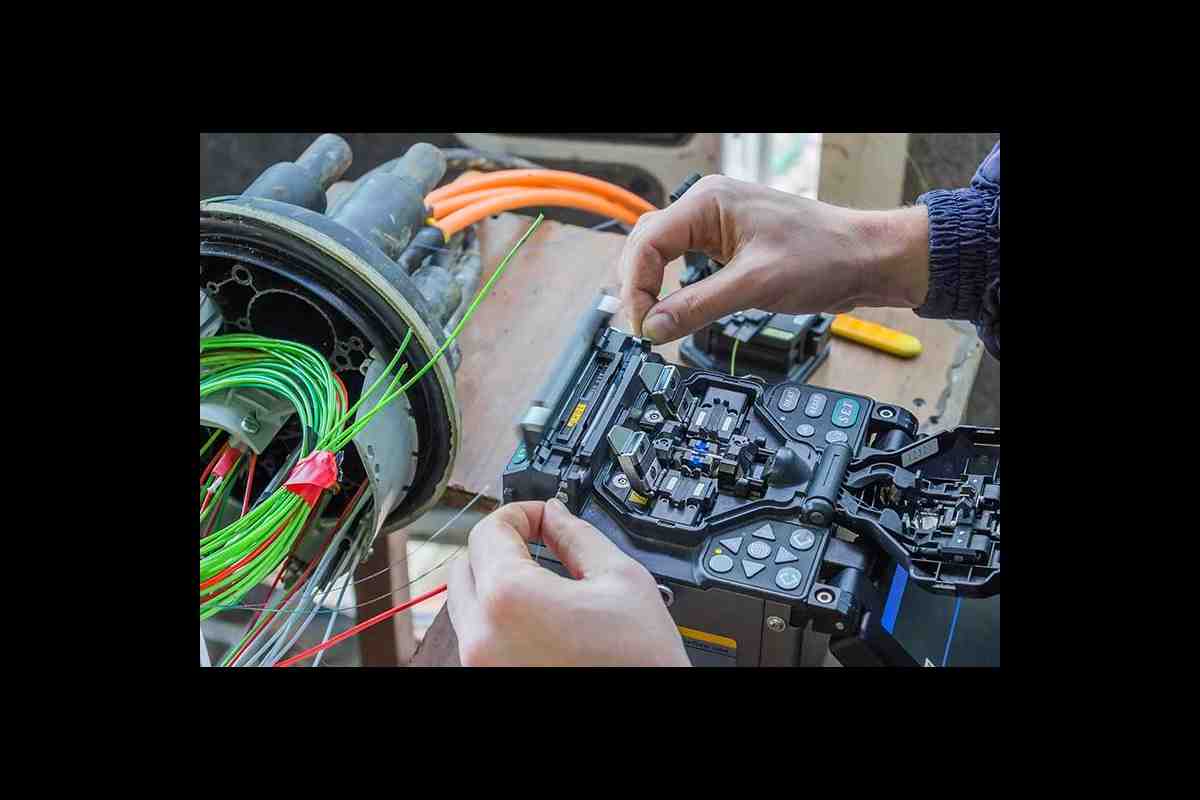

Mastering CompTIA Linux+: Objectives, Study Tips, and Exam Success
Exam Objectives and Preparation for CompTIA Linux+
A Light‑Hearted Guide to Mastering Your Linux Skills
Getting the CompTIA Linux+ badge can feel like standing before a massive, intimidating fortress. But hey, that’s just the start of an exciting adventure! If you lace up your boots with a clear roadmap, the exam is far more of a walk in the park than a sprint to the finish line. Below, I’ve broken down every corner of the exam so you can see what’s up for grabs, how to train for it, and what tricks to keep your nerves calm.
1. Understanding the CompTIA Linux+ Exam
Think of the exam as a health check-up for you, a Linux savant. It’s designed to confirm you know the ropes of:
- Booting up Linux machines
- Working with command lines and cooking up scripts
- Managing users, groups, and file permissions
- Installing, updating, and troubleshooting software packages
- Keeping your systems secure and networked
Having this “menu” in mind is the first key to a successful study plan.
2. Exam Domains And Objectives
Linux+ is split into five main territories. Here’s a quick tour guide:
- Hardware, Storage and Networking – Knowing how to set up network devices and tweak storage options.
- Command Line – Mastery over bash, pipelines, and process handling.
- System Configuration – Managing boot disks, init systems, and service scripts.
- Security – Hardening nodes and understanding user permissions.
- Troubleshooting and Best Practices – Diagnosing issues and logging best practices alike.
Each domain has bite‑size goals, and you’ll find them listed in the official CompTIA exam guide.
3. Effective Study Strategies
Staging your study space is vital – let’s decide how you’ll tackle the grind.
- Set a timetable. Give yourself chunks: 20‑day prep, 10‑day review.
- Mix theory and practice. Read a chapter, then spin up a virtual machine and apply it.
- Do flashcards. Use spaced repetition to memorize commands faster.
- Keep a study journal to track your wins and the trouble spots.
4. Educational Resources
Gold‑mines for your learning arsenal aren’t a secret:
- Official CompTIA textbooks (and the free PDF versions).
- Online courses on platforms like Udemy, Coursera, or Pluralsight – pick ones with hands‑on labs.
- Community sites: Ask questions on Stack Overflow and read blogs of seasoned Linux pros.
5. Practice Exams
Simulate the real thing and watch your score skyrocket.
- Take free online practice tests to identify the fragile area(s).
- Track your performance and re‑tune your study focus.
- Remember, the goal isn’t a 100% perfect score on the first try – it’s about learning from mistakes.
6. Hands‑On Practice
Put the theory into practice, and you’ll cement it as an instinct.
- Spin up a public cloud instance or use a VirtualBox VM.
- Install and configure different distro flavors – Ubuntu, CentOS, Fedora, or Arch.
- Write scripts, set up cron jobs, and experiment with systemd services.
- Log everything; logs are the unsung heroes of this exam.
7. Regular Revision
Review every week. A daily 10‑minute recap keeps the material fresh. A good rule of thumb: “If I can’t remember it in 20 minutes, I can’t rely on it later.”
8. Join Study Groups and Forums
Words: “Study group” often translates into “squadches.” But seriously, collective learning helps you stay motivated.
- Stick to a Discord server or Reddit sub.
- Organise mock sessions; simulate the exam and challenge each other.
- Enjoy friendly banter and motivate yourselves with light sarcasm.
9. Take Care of Your Well‑Being
Bootspinner, you’re not a machine. Keep your human fibers healthy.
- Schedule short breaks between study sessions; the 20‑min‑on‑break rule is your friend.
- Stay hydrated, stretch, and push for outdoor walks.
- Use a hobby gaining mental relaxation – maybe pizza or chess.
10. Schedule the Exam When Ready
Once your calendar says “All set,” book the test via the CompTIA site.
- Pick a test center or the online option that suits you.
- Make a “today I feel great!” ritual to match your confidence.
- Remember, a higher score means more bragging rights and a bigger savings on that Linux training you’ve been dreaming of!
Conclusion
There it is – a breezy, well‑structured roadmap to conquering CompTIA Linux+. Think of the exam as a gentle tide; get in, practice a few laps, then ride it out. The real secret? Enjoy the journey, keep your humor sharp, and let your learning bask in the glow of reality! Good luck, future Linux guru – you’ve got this.
Understanding the CompTIA Linux+ Exam
What Does the CompTIA Linux+ Certification Really Mean?
Ever wondered what it feels like to be the go‑to guru for Linux? The CompTIA Linux+® certification is a badge that shows you can install, maintain, configure, and rescue Linux systems like a pro. It’s more than a list of command names—it’s proof that you’ve mastered a broad, diverse set of skills across many fields.
- Installation Mastery – Setting up Linux with ease, no sweat, no firmware nightmares.
- Daily Maintenance – Keeping services running smoothly so users stay productive, not stuck on a blinking cursor.
- System Configuration – Tweaking everything from file layouts to network stacks, making the machine behave just the way you want.
- Troubleshooting Ninja – Quickly pinpointing root causes, whether it’s a rogue process, a mis‑configured firewall, or a kernel panic.
Think of the Linux+ as your passport to a world where you’re the hero of servers—whether you’re leading a startup, managing enterprise infrastructure, or tinkering with your own hardware playground. It’s a stepping stone that says, “I’m more than a coder; I’m a full‑blown system storyteller.”
Exam Domains and Objectives
Take Your Shot at the CompTIA Linux+ Exam – Here’s What You’ll Need to Master
Think of the exam as a chessboard full of five big clusters that will test your savvy. If you can crush each cluster, you’re on the path to becoming a certified Linux ace.
1. Hardware & System Configuration
- Get the hang of storage settings – SSDs versus HDDs, RAID levels, and the “where to keep your data” debate.
- Play with cloud & virtualization – be it AWS, Azure, Docker or VMs, you’ll need to know how to spin them up.
- Juggle network parameters – set IPs, DHCP, traceroutes, and all those pesky subnet masks.
- Tame kernel modules – learn when to load, unload, and keep the kernel happy.
2. System Operation & Maintenance
- Read the documentation like a detective – manuals, man pages, and online help are your best friends.
- Schedule jobs with cron or systemd timers – because nobody likes a surprise reboot.
- Define server roles – you’ll need to know the difference between a file server, a web server, and a database server.
- Manage software & services – install, upgrade, and keep all those daemons humming.
3. Security
- Learn hardening techniques – patching, firewall rules, and preventing “who the heck is pinging my server?” attacks.
- Master user & group management – because every Linux system has a “who’s who” card.
- Set permissions like a pro – gone are the days of “chmod 777 all the things.”
4. Linux Troubleshooting & Diagnostics
- Diagnose hardware problems – from bad disks to failing NICs, you’ll troubleshoot like a tech superhero.
- Kick back your system attributes – get the CPU, RAM, and disk usage details you need to fix issues before they hit the fan.
- Perform operations diagnosis – logs, monitoring, and system status checks are your toolbox.
5. Automation & Scripting
- Use Git for version control – because you need to track changes, rollbacks, and branches.
- Write and understand Bash scripts – automate mundane tasks, save time, and reduce human error.
So, there you have it: five major nuggets you should dive into. Dig deep, practice a lot, and when the exam day rolls around, you’ll waltz in with confidence – roll, roll, Linux, roll!
Effective Study Strategies
Get Your Linux Ready—5 Killer Study Hacks
1. Start With the Basics
Don’t jump straight to the command‑line wizardry. Build a solid foundation by familiarizing yourself with the Linux file system and the basic terminal commands. Think of it as learning to walk before you run a marathon. A quick 30‑minute walkthrough of ls, cd, and mkdir will set the stage.
2. Turn theory into practice
Flashcards and cheat sheets are great, but the real magic happens when you actually type commands. Create a little lab environment—use a VM or Docker container—and test every concept you read about. A practical approach turns abstract knowledge into muscle memory.
3. Make use of the “Five F’s”
Focus, Find, Fix, Formulate, and Fumble. Pick a topic, find a tutorial, experiment until it works, formulate the theory, and if something breaks, fumble it back into frame. Repeat the cycle until you’re comfortable. This keeps learning dynamic and prevents the dreaded “train wreck” moments.
4. Join a Study Squad
Scratch alone? You’re a one-man or one-woman show in a wrong theater. Find a buddy or a community forum for CompTIA Linux+—peer support spreads doubts, offers fresh angles, and keeps motivation in check. Throw in a weekly group check‑in to swap wins and fails.
5. Mock the Exam, but Make It Fun
Replicate test conditions: set a timer, pull out a bomb, and answer as if you were in the office. After each mock run, celebrate the correct answers (high five, grab a snack) and taunt the errors with a gentle “Next time, you’ll nail it.” The rhythm of practice plus a dash of celebration builds confidence and stamina.
Bottom line: Study, play, repeat—then show the exam what you’re made of! Good luck, future Linux superstar.
Educational Resources
Boot Up Your Learning Toolkit!
When you’re gearing up for the CompTIA Linux+ exam, the secret sauce isn’t just memorizing commands—it’s diversifying your study arsenal. Think of it as a power-up combo that keeps your brain buzzing and your confidence soaring.
Why Mix It Up?
Relying on one type of resource can feel like using only a hammer when you’re building a spaceship. Mix it up to cover every angle: interactive simulations, bite‑size tutorials, and the go‑to books that’ve been written with this exam in mind. Each format brings a fresh flavor to your learning playlist.
Top Picked Resources
- Interactive Simulations – Get hands‑on in a sandbox environment. It’s like testing a car’s brakes on a treadmill before hitting the road.
- Online Tutorials – Short, snappy videos that walk you through specific topics. Perfect for popping in during a coffee break.
- Exam‑Focused Books – Authors have already taken the exam bias away and focused on core concepts, so it’s easy to hit the “aha” moments.
- Official Training Videos – CompTIA’s own archival footage ensures you’re getting the purest version of the material.
- Study Manuals – Structured revision decks that turn complex ideas into chew‑able bite‑sized chunks.
Getting the Most Out of Them
Pair your study materials with real‑world practice. Ran a script? Run it in a virtual machine. Tested an understanding? Try it on a live system. If you can’t ‘see’ it, react to it, you’ll remember it a lot longer.
Final Boost – Keep the Mood Light
Don’t forget humor and emotion. Laugh at the quirky error messages, celebrate when a command finally runs like a perfectly brewed cup of coffee, and share your little victories. This keeps the learning journey fun and keeps the exam anxiety at bay.
Snap your gear, set up your study timeline, and roll out your learning toolkit. You’re not just ready for Linux+—you’re ready to shine in it!
Practice Exams
Why Mock Exams are a Game‑Changer for Your Study Plan
Picture this: you’re gearing up for a major test, and the only thing that keeps you from the anxiety zone is a “practice run” that feels just like the real thing.
- They act as a reality check, letting you spot the tricky parts you’ve been glossing over.
- They introduce you to the rhythm and layout of the questions, so you won’t be surprised when the actual exam comes.
- They give you a chance to keep track of your progress—no more guessing if you’re ready.
In short, brushing up with mock tests isn’t just a good idea; it’s your ticket to confidence and competence. Step into the exam room with your brain fully trained and your nerves ticking in the right rhythm, and watch how smoothly the test unfolds.
Hands-On Practice
DIY Linux Lab: Your New Playground
Think of Linux as that cool indie rock band; you only get to really know the sound after you’ve jammed with it. The best way to master the vibes is to set up your own lab environment and throw a few commands into the mix.
Why Build Your Own Lab?
- Hands‑On Learning – Nothing beats the thrill of typing
sudo apt updateand watching the screen dance. - Experimentation Freedom – Change settings, break things, and watch how the system recovers without any real‑world consequences.
- Immediate Feedback – Mistakes turn into learning moments instantly.
Getting Started: The Quick Setup
- Choose Your Tools – Virtual machines (like VirtualBox or QEMU) or containerised solutions (Docker). Pick what feels like a tool you’d love to play with.
- Pick an OS – Ubuntu, Fedora, or even Debian – use what you enjoy and experiment with the flavours.
- Create a Snapshot – Save a clean state. That way, you can rewind faster than a VHS rewind button.
- Load Real‑World Scenarios – Simulate network set‑ups or firewall configurations to see how the system adapts.
Some Fun Experiments
- Spin up two containers that talk to each other over the network. Guess who gets the error first?
- Write a tiny script that flips a light bulb on your desktop. (You can use smarts plugs or just the magic of “echo”!)
- Turn off network interfaces, then challenge yourself to reconnect using the right commands.
By building your own lab, you’re not just learning Linux—you’re building confidence. Once this becomes your playground, you’ll glide through real‑world tasks like a pro. Have fun, and remember: every great sysadmin was once a curious playground‑kid!
Regular Revision
Keep Your Study Smarts Alive: A Fun Weekly Revamp
Learning doesn’t vanish once the textbook closes. Keep the knowledge fresh by carving out a weekly study blast—just a short, focused session to revisit what you’ve already tackled.
How to Hit Those Blue‑Flag Areas
- Spot the tricky spots: When you find a topic that sticks to you like gum, give it extra love during revision.
- Mind maps are your best friends: Draw a visual web of ideas—color it up, make it quirky.
- Flashcards, one‑liner, gold: Put the tough facts on one side, the answer on the flip; shuffle relentlessly.
- Summaries matter: Summarize each chapter with a headline, a sentence, or a meme.
Why Revise So Often?
Each time you go over material, you’re building a sturdy knowledge foundation. When exam day rolls around, this foundation lets you zoom through questions speedily and confidently—a true sprint mindset.
Your Week at a Glance
Monday – Quick 10‑minute recap
Thursday – Flashcard marathon
Friday – Mind map review
This keeps the brain active, reduces stress, and turns learning into a fun habit.
Join Study Groups and Forums
Make Your Mark in the Learning Zone
Jumping into conversations with fellow students feels like dipping into a seafood platter of wisdom: a splash of fresh perspectives, a sprinkle of practical advice, and a generous dollop of moral support that keeps the learning tide rolling.
Why the Mix Matters
- Fresh Ideas – Every chat is a chance to uncover angles you hadn’t seen before.
- Real‑World Tips – Seniors and peers often spot the “tricks” that textbooks miss.
- Encouragement Boost – A quick shout‑out or a validating comment can change the whole page of your study day.
Got a Board or Community?
Online hubs dedicated to CompTIA certifications are treasure troves where you can post questions, swap study hacks, and even troll the occasional meme that makes the practice questions feel less like a chore.
Share, Ask, Grow
- Post your toughest quiz questions and watch the crowd remix them.
- Respond to a peer’s doubt, and instantly earn a “mentor” badge in the community.
- Keep a running list of insights—those nuggets will later become your professional cheat sheet.
And the perks? Not only do you get a richer learning experience, but you also knit a network of contacts that could turn into future allies, mentors, or even career‑boosting collaborations.
Take Care of Your Well-being
Cracking the Exam Game: A Friendly Guide
Listening to your brain, your body, and that stubborn exam anxiety is key. It might feel like you’re juggling flaming swords, but with a few tweaks you can keep the flames under control.
- Sleep: Imagine your mind is a phone battery. A full charge means you’re ready to shoot the exam questions, not to roll out in a zombie haze.
- Move Those Muscles: No, you don’t have to run a marathon. A quick walk or a couple of yoga poses can reboot your focus faster than scrolling through endless Instagram.
- Mind Your Food: Fuel up on brain‑boosters like fruits, nuts, and a splash of water. Skip the deep‑fried nightmares; your neurons aren’t fans of greasy bites.
- Breaks are the Secret Sauce: Every 45 minutes, hit pause. Blink, stretch, or just stare at your reflection. This keeps the brain from going into “auto‑pilot” mode.
- Stress Check: When you feel the pressure, take a breath and maybe sing a lullaby in your head—anything that makes your heart beat a little slower.
- Find Your Chill Vibe: Whether it’s yoga, a good book, or a coffee with a friend, do something that lets your mind unwind. That’s the real study hack—your brain likes the reward.
Remember, exams are just a big practice run for the future. Treat yourselves, drink coffee, laugh at your own jokes, and you’ll walk in, crush it, and maybe even beat your own record.
Schedule the Exam When Ready
Master Your Exam: Smart Timing and a Zen Mindset
Picture this: you’re about to step into the exam hall, but it’s not about the seat or the paper—it’s about how you prepare and how you readapt at that moment.
1. Beat the “Schedule‑Sweat” Blues
- Know Your Readiness. Don’t book that test until you’ve nailed the essentials. Knowing you’re ready gives you the confidence to stroll in like a pro.
- Plan, Don’t Panic. Sit down, list what’s needed, and make sure you’ve ticked every box. An organized mindset beats a frantic one every single time.
- Remember: Preparedness = Peace of Mind.
2. Pick the Perfect Time and Spot
- Sync With Your Rhythm. Choose an exam slot that lines up with when you’re at your best—usually mid‑morning or early afternoon when the brain is fresh.
- Location Matters. Pick a venue that feels familiar and calm. A cozy space means fewer nerves and more sharpness.
- When in doubt, set the clock to “Quiet Zone” and keep distractions out.
3. Stay Chill, Stay Sharp
It’s all about that relaxed state you carry into the exam. Picture a calm wave rolling across your entire focus. That’s the vibe you want—stressful? Not so much.
- Practice breathing exercises before you step in.
- Think of the exam as a friendly chat, not a showdown.
- Remember, a relaxed mind is a fantastic memory machine.
Wrap‑Up: The Road to Exam Success
In a nutshell: Prep wisely, pick wisely, and stay zen. When you’re ready, confident, and relaxed, the exam becomes just another chapter of your story—easy to tackle and full of triumph.
Conclusion
Knocking Down the CompTIA Linux+ Exam—One Objective at a Time
Picture this: the exam room is a high‑stakes strategy board, and every objective is a dice roll you need to know the odds of. If you bite into each one, break it down, and practice it like you’d practice your favorite playlist, you’ll walk into the test feeling like a seasoned Linux wizard.
Why Focus on Objectives? Because Every One Counts
- Get the Big Picture – Objectives are the roadmap. Knowing where each one leads means you’ll know which areas boost your score.
- Targeted Practice – Instead of dumping hours into random tutorials, dial in on a particular skill set and turn it into muscle memory.
- Confidence Boost – When you can tackle one objective, it’s like clearing a checkpoint. That feeling of “I’ve got this” spreads to the rest of the exam.
How to Tackle the Objectives Like a Pro
Think of each objective as a mini‑mission. Here’s a game‑plan to succeed:
- Read & Highlight – Start by skimming the objective list. Highlight the key words; they’re your mission triggers.
- Build a Study Bunch – Group objectives by theme (e.g., system services, networking, storage). This is the “plus one” you’ll pair with practice labs.
- Hands‑On Lab Time – The real kicker: spin up a VM, throw your commands at it, watch what happens. The more you poke around, the more points get stuck in your memory vault.
- Mock Tests & Flashcards – Play quick Q&A rounds to see which objectives hold the most tenacity.
- Peer Talk – Catch up with friends or online forums. Discussing concepts is like swapping spoilers for a thrilling movie—you get deeper insights.
Beyond the Exam—A Career with Linux
Passing CompTIA Linux+ isn’t the finish line; it’s the launchpad for becoming a rock‑star system administrator. Keep the momentum alive by:
- Continuing Education – Stay on top of new distro releases, security patches, and cloud trends.
- Portfolio Projects – Showcase scripts, automation pipelines, or even a home lab setup that proves you can maintain real‑world machines.
- Community Involvement – Hackathons, open source contributions, or just uplifting forum posts make you a well‑connected professional.
So, lace up your boots, grab your Linux cheat sheet, and conquer those objectives one by one. The CompTIA Linux+ exam will thank you—and your future career will applaud you too!







